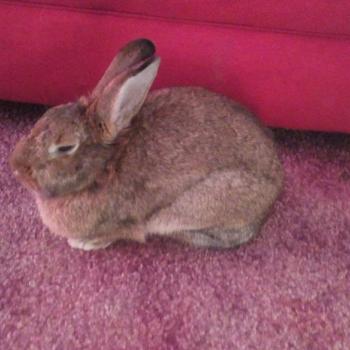
While the previous bits of wisdom are great for figuring out what the weather is going to do short term, what about the long range weather lore? Most of those reading this will have heard of at least the predictions of 2 February, or what we call Groundhog’s Day in the US. Honestly, there’s little merit to such predictions based on a particular day of the year and what the weather is like on that day.
The thickness of an onion skin is more a reflection on the type of summer just past than it is on the coming winter. The same can also be said for how many nuts the squirrels are storing away for their winter’s hoard – although my stepfather would always notice and comment when out hunting if he noticed lesser or fewer nuts than there should normally be.
My mother reminded me of the saying about hornets’ nests. The higher they build their nests, the worse the winter weather that’s on its way. I’m not sure why they build their nests higher or lower in any given year, but I’m pretty sure it doesn’t necessarily indicate a bad winter all by itself.
As a child, my favorite bit of weather prediction was the woolly worm, or the woolly bear caterpillar. They were one of the few worms or caterpillars I wasn’t afraid to pick up and the fact that they could foretell the winter just added to my delight. (The black bands indicate periods of harsher weather, while the lighter brown ones let you know when the milder winter weather will be.) As I’ve gotten older, though, I’ve noticed big discrepancies in how big those weather predicting bands of color are. My mother will argue with me on this one (1), as will quite a few other folks out there. Perhaps I’m taking my weather forecasting sample from too large of an area? Who knows. It’s still a fun bit of lore to teach your children, who will be delighted at how tightly the little guys curl up into a defensive ball when picked up.
These next, and last, two bits of lore also come from my mother. I had completely forgotten the correlation between a hard winter and how the animals ate towards the end of summer and into the fall. Some would argue that it was purely coincidence, but our pony obviously knew something about the coming weather. Princess (2) liked to eat, don’t get me wrong, but she would really pack on some extra weight just before a harsher winter (the mid-70s comes to mind) and her coat just kept getting thicker and shaggier. She’s the only animal other than dogs, cats, and chickens that we had consistently throughout my childhood, so my experience is limited to just her behavior, but I’ve also heard other farmers say the same thing about their cattle and horses. The part that baffles scientists, and gets this bit of lore lumped into myth only, is how an animal could possibly know. Perhaps it’s part of some cycle that they can detect. Perhaps we used to be able to notice the same subtle hints ourselves, but time and an increasing reliability on the quantifiable science has removed us from still being able to detect such nuances in nature.
Finally, because I’d never heard this one before, comes a last bit of lore from my mother. I’ve no idea how valid it actually is, but it could serve as an indicator of a wet spring. Be that as it may, if the river floods and leaves behind ice, it’ll come back for it later. (Meaning there will be another flood in warmer weather.) (3)
Notes:
1. Okay, I must admit that this winter was nailed by a two of the three wooly bears I found around our property.
2. Yes, as children, my sister and I had the absolute stereotype, not that we realized it at the time. I think she came with the name. Princess was as much of a character as my house bunny is now.
3. This was definitely the case this year down here in our corner of Athens County. However, keep in mind that flooding in this area has been on the rise in the last few years.
For Further Reading:
Allaby, Michael. How the Weather Works: 100 Ways Parents and Kids Can Share the Secrets of the Atmosphere. London, England: Dorling Kindersley Limited for Reader’s Digest, 1995.
Lemen, Bob. “Cowboy Bob’s Weather Lore.” http://www.lemen.com/WeatherLore1.html. (Accessed July 2009).
Tate, Ken and Janice. Good Old Days: Country Wisdom.Berne, Indiana: House of White Birches, 2001.
Walker, Nick. “Weather Proverbs: True or False http://www.wxdude.com/singalongcompanion/styled-2/index.html. (Accessed July 2009).
Wilson, Jerry. “SkyWatch: Signs of the Weather.” http://www.wilstar.com/skywatch.htm. (Accessed July 2009).
















